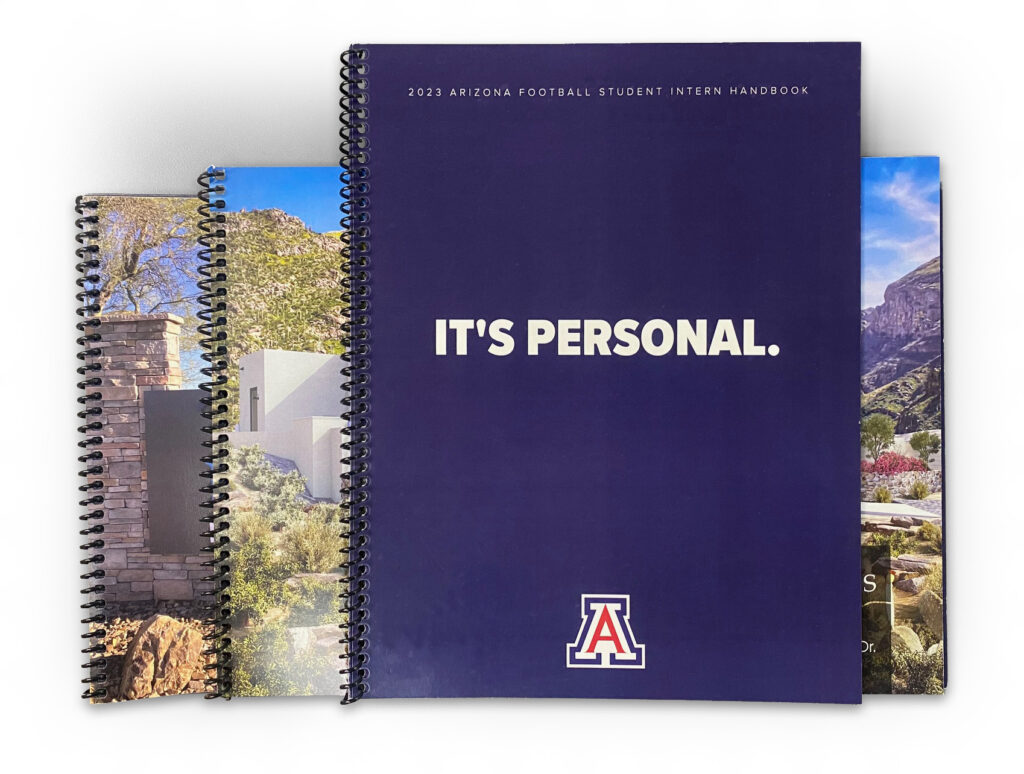
Booklets, Magazines, and Catalogs: Choosing the Right Fit for Your Needs
Booklets, magazines, and catalogs are all powerful tools for informing, engaging, and selling to your target audience. But with so many options available, how do you choose the right format for your project? Here’s a breakdown to help you decide:
Booklets
 Purpose
Purpose
Ideal for concise, informative content like presentations, reports, product manuals, or event programs.
 Length
Length
Typically shorter than magazines or catalogs, ranging from a few pages to around 100.
 Binding
Binding
Saddle-stitched (stapled) binding is a common choice, but options like spiral or perfect binding can also be used.
 Paper
Paper
Standard weight paper is often sufficient, but for a more premium feel, consider thicker or glossy paper stock.
 Benefits
Benefits
Cost-effective, portable, and easy to distribute.
 Example
Example
Restaurant menus, product guides, travel brochures, training manuals.
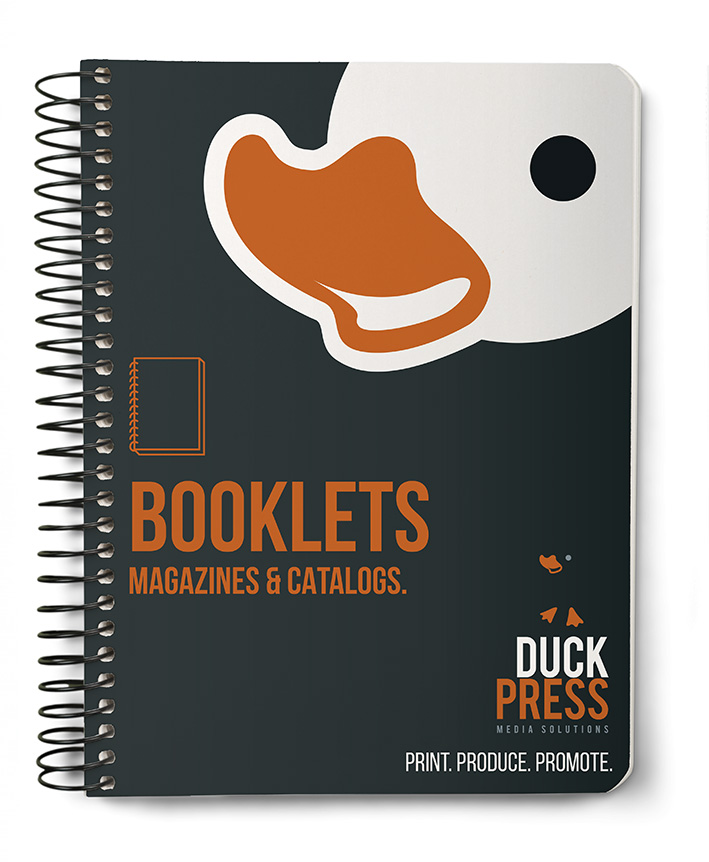
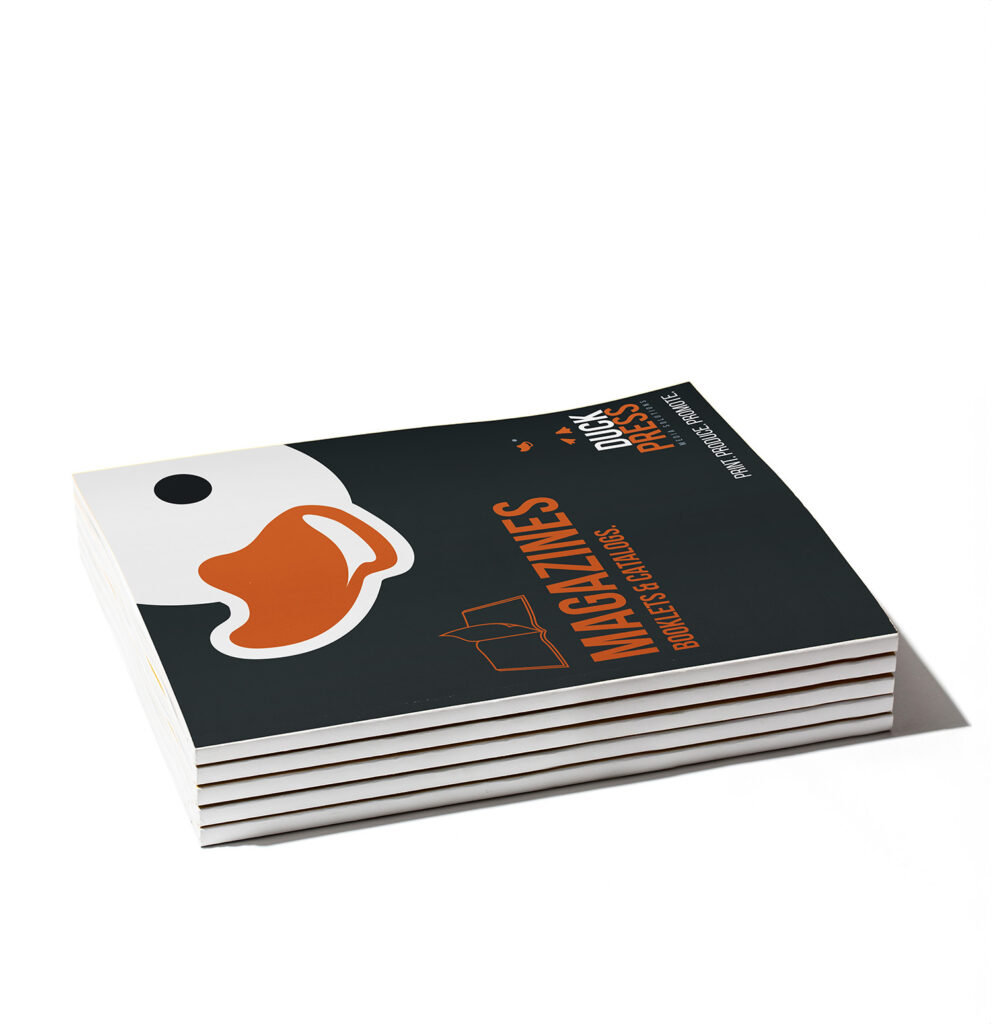
Magazines
 Purpose
Purpose
Well-suited for sharing news, in-depth articles, interviews, and engaging visuals to build brand awareness and connect with a wider audience.
 Length
Length
More extensive than booklets, typically ranging from 20 to 100 pages or more.
 Binding
Binding
Perfect binding with a glossy cover is a popular option, creating a professional and newsstand-worthy look.
 Paper
Paper
Glossy paper for the cover and higher-quality paper for the interior is common.
 Benefits
Benefits
Allows for a variety of content formats, fosters brand loyalty, and offers a platform for long-form storytelling.
 Example
Example
Customer magazines, industry publications, fashion magazines, travel magazines.
Catalogs
 Purpose
Purpose
Primarily used to showcase and sell products, highlighting features, benefits, and pricing information.
 Length
Length
Can vary depending on the number of products, but catalogs tend to be longer than booklets, ranging from 20 to several hundred pages.
 Binding
Binding
Perfect binding with a glossy cover is a common choice for durability and presentation.
 Paper
Paper
Glossy or matte paper with high-quality product photography is essential.
 Benefits
Benefits
Drives sales, showcases product variety, and informs customers about your offerings.
 Example
Example
Product catalogs for clothing, furniture, electronics, or office supplies.
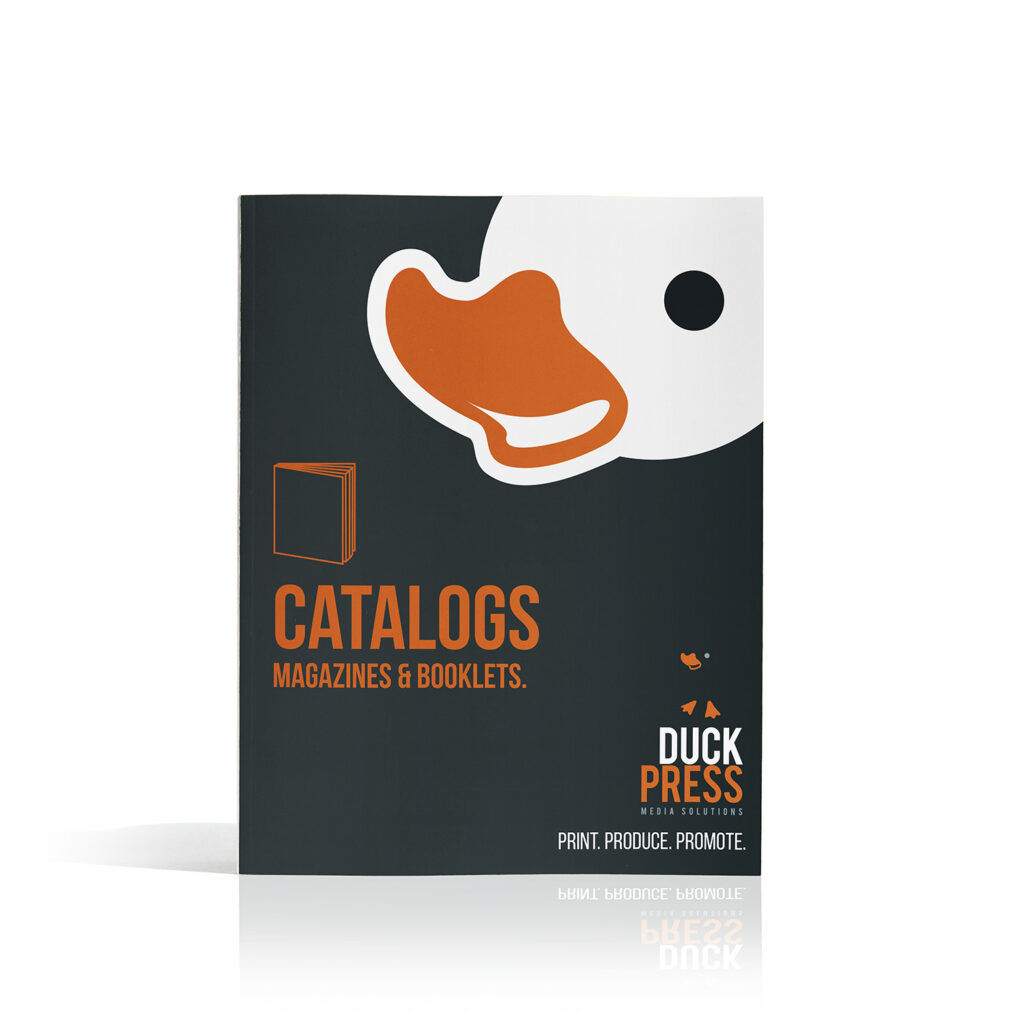
Here are some additional factors to consider when making your decision:
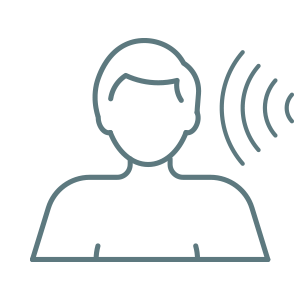
Target Audience
Who are you trying to reach? Consider their reading habits and preferences.
Budget
Printing costs can vary depending on factors like size, paper quality, and binding type.
Content
What kind of information do you want to convey? Bullet points and short descriptions are better suited for catalogs, while magazines allow for more in-depth storytelling.
Distribution
How will you get your booklets, magazines, or catalogs into the hands of your target audience?
By considering these factors, you can choose the format that best suits your project goals and target audience. No matter which you choose, booklets, magazines, and catalogs can be powerful tools for promoting your business, educating your audience, and achieving your marketing objectives.
Saddle-Stitched
A Simple and Cost-Effective Solution
Saddle stitching, also sometimes referred to as stapling, is a popular and versatile binding method used for booklets, brochures, pamphlets, magazines, and catalogs. Here's a closer look at saddle stitching and its key characteristics:
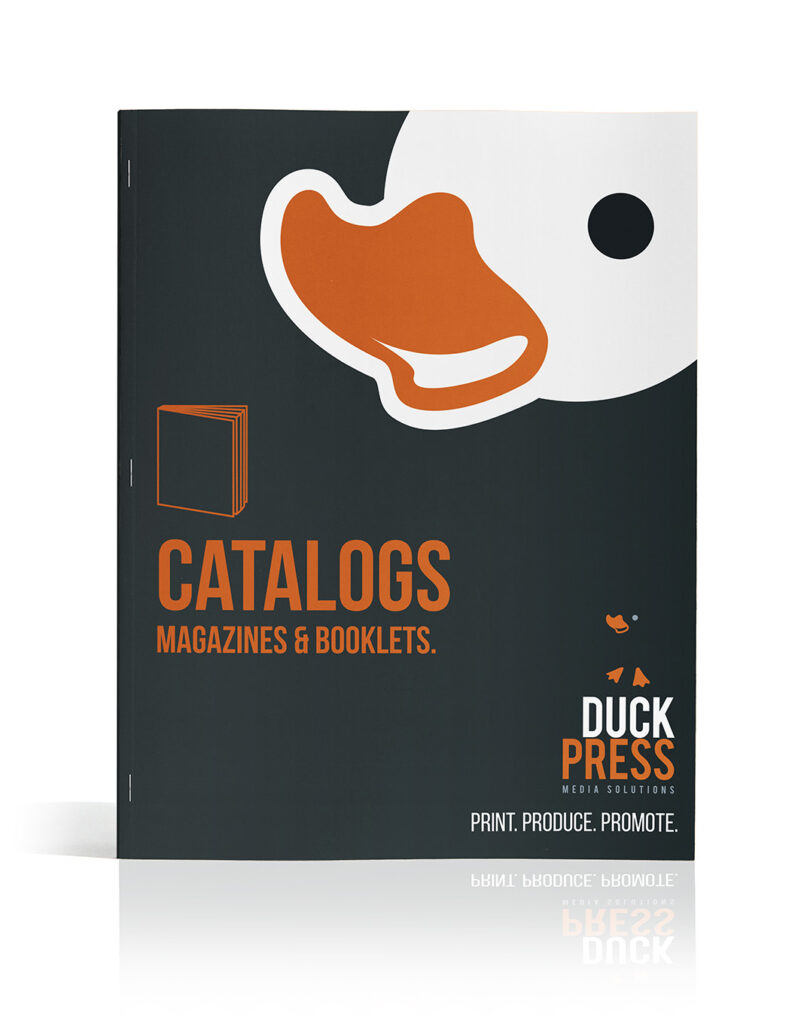
The Process
- Folded sheets of paper are nested one inside the other, creating multiple pages.
- The stack of folded sheets is then placed over a saddle-shaped apparatus, resembling the shape of a horse’s saddle (hence the name).
- Long staples are then driven through the fold of each section, securing all the pages together.
Advantages
- Cost-Effective: Saddle stitching is one of the most affordable binding methods, making it ideal for projects with a tight budget.
- Simple and Quick: The process is relatively straightforward and can be completed quickly, allowing for fast turnaround times.
- Durable: Despite its simplicity, saddle stitching can create booklets that are surprisingly durable and hold up well with moderate use.
- Lays Flat: Saddle-stitched booklets can lie flat when opened, making them comfortable to read and navigate.
- Wide Range of Applications: This versatile binding method can be used for a variety of projects, from small pamphlets to thicker catalogs.
Things to Consider with Saddle Stitching:
 Page Count
Page Count
Saddle stitching is typically best suited for booklets with a lower page count, generally ranging from a few pages to around 100 pages. With a higher number of pages, the booklet may become bulky or difficult to fold flat.
 Spine Coverage
Spine Coverage
Since the staples are placed along the fold of the spine, there is limited coverage on the spine itself. This may not be ideal for projects requiring extensive text or information on the spine.
 Professional Look
Professional Look
While saddle stitching can create a neat and functional finish, it may not offer the same level of perceived quality as some other binding methods like perfect binding (which has a glued spine with a fully wrapped cover).
Wirebound
A Versatile and User-Friendly Binding Option
Wire binding, also known as double-loop wire, double-o, ring wire, twin loop wire, wire comb, or wire-o, is a popular binding method offering several advantages for booklets, manuals, presentations, and other documents. Here's a breakdown of its key features and benefits:

The Process
- Pages are pre-punched with a series of round holes along the designated binding edge.
- A double C-shaped or spiral wire is inserted through the holes.
- A wire closer then crimps the ends of the wire, securely binding the pages together.
Benefits
- Durability: Wire binding offers good durability, withstanding frequent opening and closing. The wire construction resists tearing and allows for heavy use.
- Flexibility: Documents bound with wire binding can lie completely flat when opened, making them ideal for presentations, reports, or manuals that require easy reference.
- 360-degree Rotation: Pages can rotate a full 360 degrees, allowing for easy flipping and navigation.
- Easy Updates: Some wire binding systems allow for easy addition or removal of pages, making them suitable for documents that may need frequent updates.
- Professional Look: Wire binding offers a clean and professional appearance, particularly when paired with a high-quality cover material.
- Variety of Options: Wire binding comes in various sizes and colors to match your specific needs and aesthetic preferences.
Things to Consider with Wire Binding:
 Cost
Cost
Wire binding is generally more expensive than saddle stitching but less expensive than some premium binding methods like perfect binding.
 Bulkiness
Bulkiness
Compared to saddle stitching, wire binding can create a slightly bulkier spine, especially with a high page count.
 Spine Coverage
Spine Coverage
Similar to saddle stitching, the wire binding itself doesn’t provide much coverage for the spine. This may limit the amount of text or information you can display on the spine.
Wire binding is a versatile option suitable for a variety of projects, including:
 Presentations
Presentations
The ability to lay flat and offer 360-degree page rotation makes wire-bound presentations user-friendly and visually appealing.
 Reports and Manuals
Reports and Manuals
The durability and ease of reference make wire binding ideal for documents that require frequent use or updates.
 Catalogs and Brochures
Catalogs and Brochures
Wire binding allows for thicker documents while maintaining a professional look.
 Calendars and Planners
Calendars and Planners
The flexibility and durability of wire binding are perfect for calendars and planners that require frequent flipping and reference.
Perfect Binding
Creating a Sleek and Professional Look for Your Booklets and Catalogs
Perfect binding, also known as adhesive binding, is a widely used method popular for creating high-quality booklets, catalogs, magazines, and softcover books. It delivers a professional and visually appealing finish, making it ideal for projects that demand a polished look.

The Process
- Printing and Folding: Pages are printed on large sheets and then precisely folded and collated to create the final page order.
- Gluing: A strong adhesive is applied to the spine of the folded sheets, securing all the pages together.
- Cover Attachment: A separate cover, typically made from heavier cardstock or other durable materials, is wrapped around the glued spine and adhered to the book body.
- Trimming: The book is trimmed to its final size, creating clean edges and a finished look.
Benefits
- Professional Appearance: Perfect binding creates a seamless spine with full cover wrap-around, offering a high-quality and polished aesthetic.
- Greater Spine Coverage: Unlike saddle stitch or wire-o binding, perfect binding allows for extensive text and design elements on the spine, ideal for titles, author information, or branding.
- Durability: The glue used in perfect binding creates a strong hold, ensuring the book can withstand moderate wear and tear.
- Suitable for Higher Page Counts: Perfect binding can accommodate a wider range of page counts compared to saddle stitching, making it ideal for thicker booklets and catalogs.
- Cost-Effective for Larger Quantities: While the upfront cost per unit might be slightly higher than saddle stitching, perfect binding becomes more cost-effective when printing larger quantities.
Things to Consider with Saddle Stitching:
 Cost
Cost
Perfect binding can be slightly more expensive than saddle stitching or wire-o binding, particularly for smaller print runs.
 Limited Page Lay-Flat Capability
Limited Page Lay-Flat Capability
Due to the glued spine, perfect-bound books may not lie completely flat when opened.
 Spine Design
Spine Design
Since the spine is fully covered, consider how text and design elements on the spine will interact with the cover design for a cohesive look.
Perfect binding is a popular choice for a variety of projects, including:
 Booklets and Catalogs
Booklets and Catalogs
The professional look and ability to accommodate higher page counts make perfect binding ideal for showcasing products or detailed information.
 Magazine
Magazine
Perfect binding offers a high-quality finish expected for publications with a focus on visual appeal.
 Softcover Books
Softcover Books
This method creates a polished and commercially viable look for paperback books.
 Annual Reports and Presentation
Annual Reports and Presentation
Perfect binding elevates the presentation of important documents and reports.
Overall, perfect binding is an excellent choice for projects requiring a professional and visually appealing finish. It offers a balance of durability, affordability for larger quantities, and the ability to create a cohesive design that extends from the cover to the spine.
Spiral Bound
A User-Friendly and Flexible Choice for Your Booklets and Documents
Spiral binding, also sometimes referred to as coil binding, is a popular and versatile binding method that offers several advantages for booklets, manuals, reports, planners, and presentations.

The Process
- Pages are pre-punched along the designated binding edge.
- A long, flexible plastic coil is inserted through the holes.
- The coil is then crimped at the ends, allowing the pages to rotate and the booklet to lay flat.
Benefits
- Flexibility: Spiral binding allows documents to lie completely flat when opened, making them ideal for presentations, reports, or manuals that require easy reference and note-taking.
- 360-degree Rotation: Pages can rotate a full 360 degrees, allowing for easy flipping and navigation.
- Durability: The plastic coil construction resists tearing and allows for heavy use, making spiral-bound documents durable.
- Easy Updates: Some spiral binding systems allow for easy addition or removal of pages, making them suitable for documents that may need frequent updates.
- Variety of Colors and Sizes: Spiral coils come in various colors and sizes to match your specific needs and preferences, adding a touch of personality to your project.
Things to Consider with Spiral Bound Documents:
 Cost
Cost
Spiral binding is generally more expensive than saddle stitching but less expensive than some premium binding methods like perfect binding.
 Bulkiness
Bulkiness
The spiral coil creates a thicker spine compared to other binding methods like saddle stitching. This can be a consideration if you need a compact booklet.
 Less Formal Look
Less Formal Look
While spiral binding can be professional-looking, it may not offer the same level of perceived formality as perfect binding for certain applications.
Spiral binding is a versatile option suitable for a variety of projects, including:
 Presentations
Presentations
The ability to lay flat and offer 360-degree page rotation makes spiral-bound presentations user-friendly and easy to follow.
 Reports and Manuals
Reports and Manuals
The durability and ease of reference make spiral binding ideal for documents that require frequent use or updates.
 Planners and Calendars
Planners and Calendars
The flexibility and durability of spiral binding are perfect for planners and calendars that require frequent flipping and writing.
 Workbooks and Activity Books
Workbooks and Activity Books
The ability to lay flat and write on both sides of the page makes spiral binding ideal for interactive materials.
Overall, spiral binding is a practical and user-friendly choice that offers a good balance between affordability, durability, and flexibility. It's a popular selection for documents that need to be functional, easy to use, and allow for frequent referencing or page manipulation.
Duck Press Media Solutions
Your One-Stop Shop for Eye-Catching Graphic Design
At Duck Press Media Solutions, we understand the power of visual communication. Our team of talented graphic designers can help you create stunning layouts and captivating cover designs that will grab attention, elevate your brand, and achieve your marketing goals.
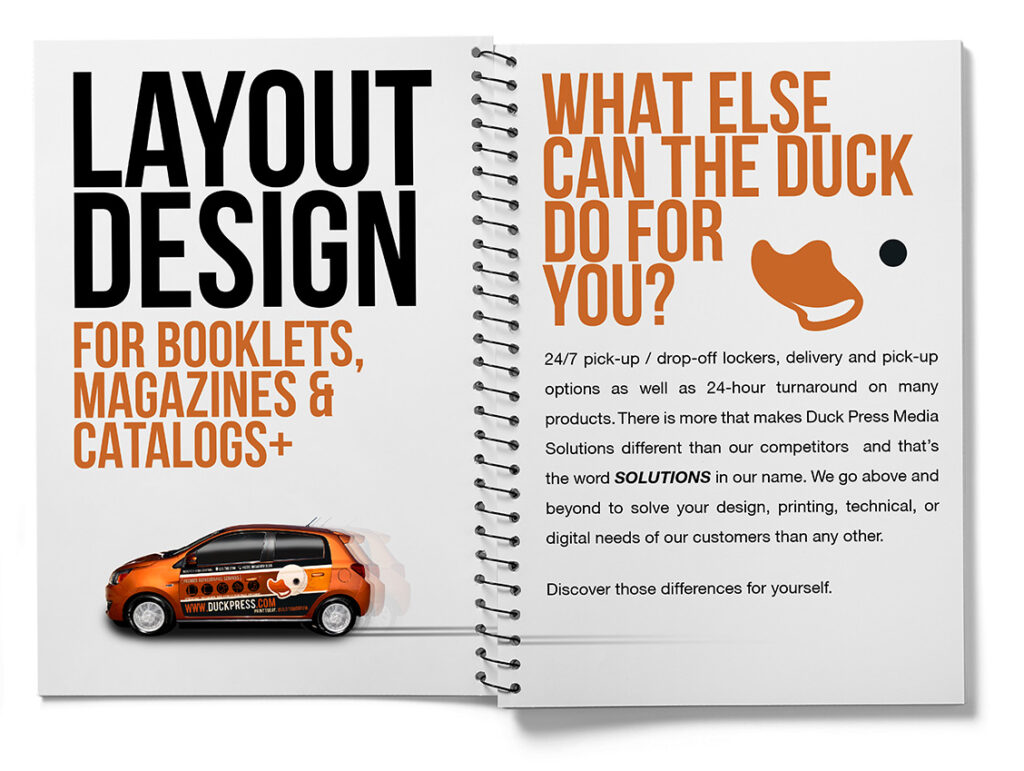
Layout Design Services
- Strategic Planning: We’ll work closely with you to understand your target audience, project objectives, and brand identity.
- Information Architecture: We’ll create a clear and organized layout that guides readers through your content in a logical and user-friendly way.
- Visual Hierarchy: We’ll use elements like size, color, and negative space to prioritize important information and create a visually appealing flow.
- Typography Expertise: Our designers understand the power of fonts and will choose typefaces that are both aesthetically pleasing and easy to read.
- Image Selection and Editing: We’ll use high-quality visuals that complement your brand and content, and ensure they are properly edited and formatted for optimal impact.
- Software Expertise: Our team is proficient in industry-standard design software like Adobe InDesign, Illustrator, and Photoshop, ensuring professional and high-quality results.

Cover Design Services
- Attention-Grabbing Concepts: We’ll develop unique and eye-catching cover designs that will make your project stand out from the crowd.
- Brand Alignment: Your cover design will seamlessly integrate with your brand identity, colors, and fonts, creating a cohesive look.
- Target Audience Focus: We’ll consider the interests and preferences of your target audience to design a cover that resonates with them.
- Compelling Visuals: We’ll incorporate captivating imagery, illustrations, or typography to entice viewers and encourage them to explore further.
- Multiple Design Options: We’ll present you with various design concepts to choose from, ensuring you find a cover that perfectly reflects your vision.
- Mockup Creation: We’ll provide mockups to visualize how your cover design will translate onto your chosen format, whether it’s a print booklet, magazine, or digital publication.
Let Us Help You Make a Lasting Impression.
Whether you need a user-friendly layout for a report or a captivating cover design for your new book, Duck Press Media Solutions is here to help. Contact us today to discuss your project and let our design team create visual elements that inform, engage, and leave a lasting impression on your audience.
Call us today, (520) 795-1700.



